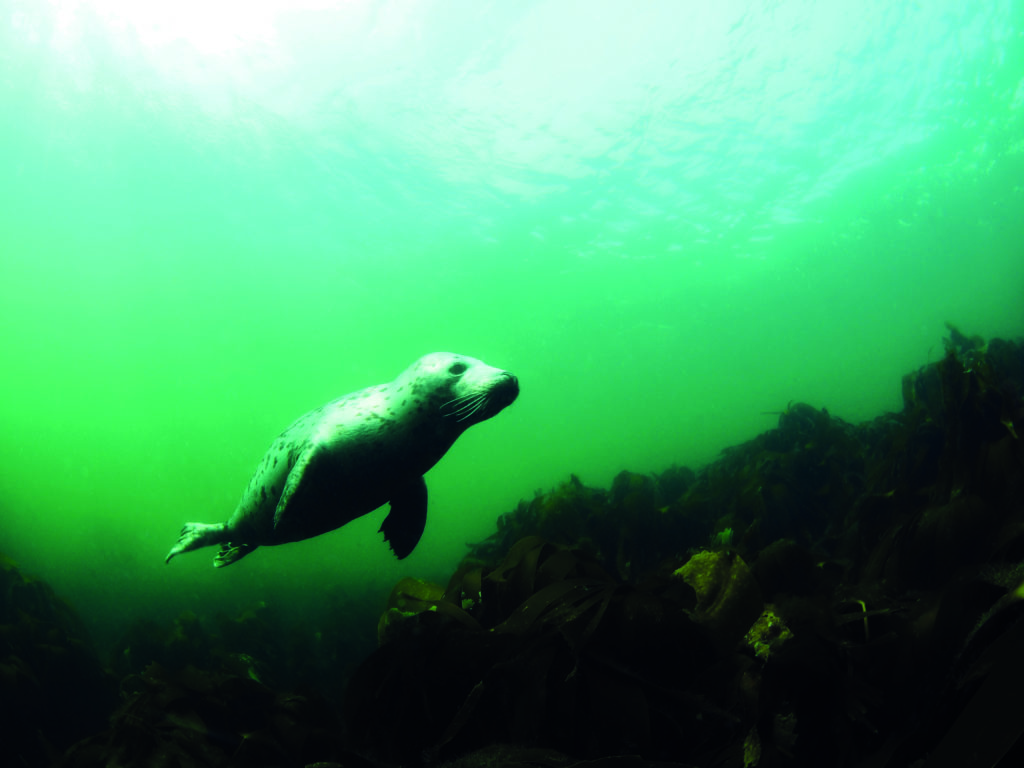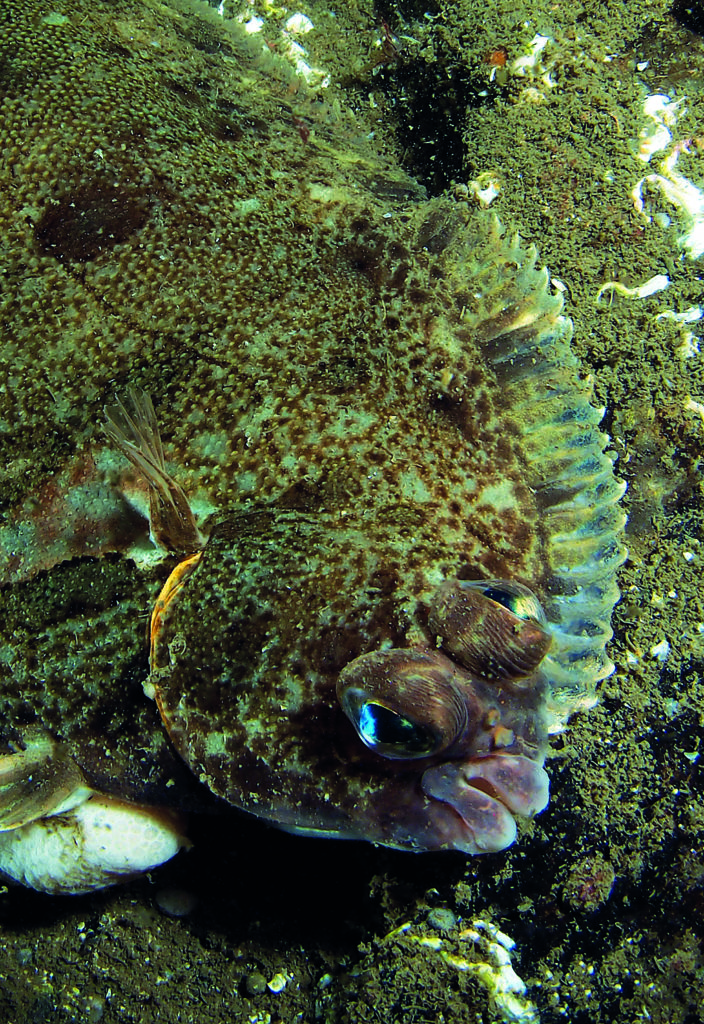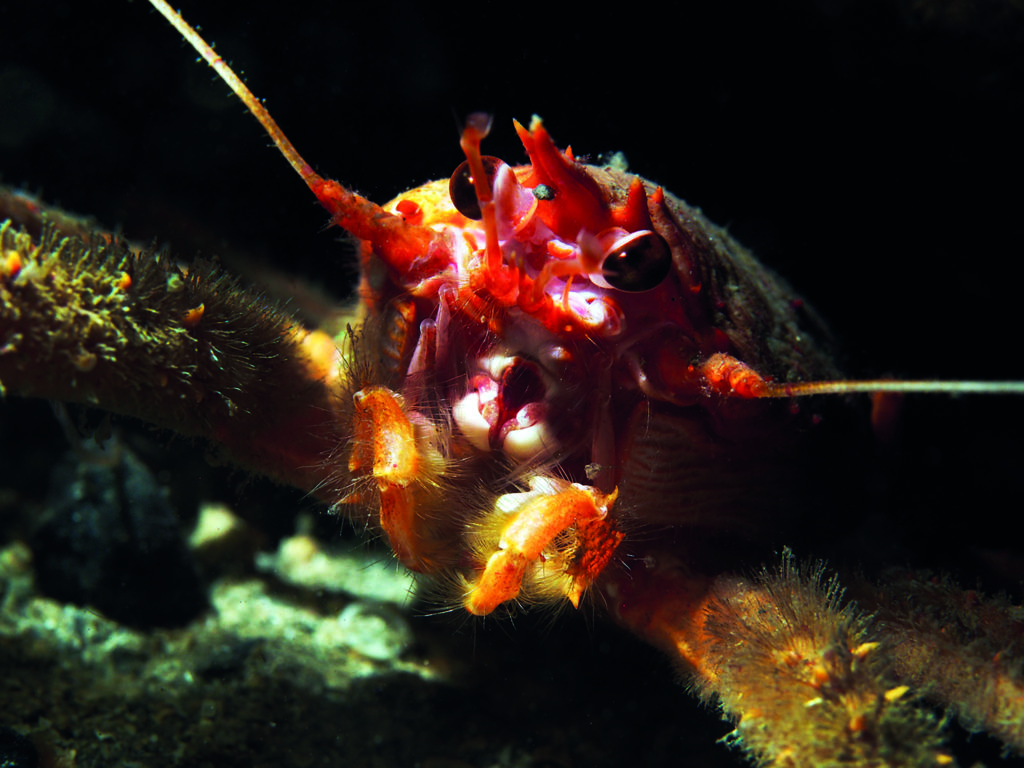LAWSON WOOD explores the seabird-covered landmark at the entrance to the Firth of Forth, which offers dramatic scenery both above and below the surface
The entrance to the Firth of Forth in south-east Scotland is guarded by a number of islands, the largest and most obvious of which is Bass Rock, or “The Bass” about a mile offshore, and just over three miles north-east of North Berwick in East Lothian.
While this dive has a range of depths, undoubtedly the largest diversity of life and colour is found at less than 20m along the northern wall from the large sea-cave to the eastern section of the near-vertical wall.
Overview of Bass Rock
One of Scotland’s national nature reserves, the privately owned Bass Rock is famed for its resident population of gannets (Sula bassana), named after this rocky stack. This is the largest “single rock” colony of northern gannets in the world.
The sea-cave cuts through this ancient volcanic plug, and grey seals inhabit its smaller caves during their breeding season. Divers are sure to enjoy their company along the northern side, opposite the caves and rocky shore.
Formed more than 350 million years ago, Bass Rock is a huge trachyte (igneous rock) plug that rises 107m at its highest point and is fairly circular in shape. This results in near-vertical walls on three sides and a massive tunnel that cuts the rock as it slopes more gently towards the south.
There is an old foghorn at the top of the rock, an old lighthouse in the lower regions nearby and a long promontory, which features the gannet-covered remains of a castle dating back to 1405.
The plug is all that remains of an ancient volcano, and its sisters can be seen all around this flat region of East Lothian, including the rock that supports Edinburgh Castle.
You can dive around all of the Bass Rock, but most divers start along the northern shore near the cave and keep the rock face on the right-hand side as they dive along its flanks. There is a scree slope to the edge of the north-western cavern and a muddier bottom to the south-east.
Perfect dive-site
With the huge numbers of seabirds found on the rock visibility can be variable, as a result of the large quantities of guano dropping from the sky above.
While gannets are the predominant lodgers, you can also find shags, kittiwakes, razorbills, seagulls, guillemots and even puffins, which have travelled down from their nesting burrows on the Isle of May. The Bass is visited by hundreds of tourists each day from May to September but, despite all it has to offer beneath the surface, rarely by divers.
Most dives are done on an ebbing tide. You start in the north-west and, wall to your right, allow the gentle current to help propel you along to the north-eastern side of the rock.
Regarded as one of the top three cliff-dives in the UK and one of the top 12 wildlife wonders of the world, the dive-plan is simple: drop to your desired depth and follow the near-vertical wall around until it’s time to come up!
As you approach the other side of Bass Rock, you come to an area of slack water where the current diverges and starts to push against you. It is usually at this point that you finish your dive.
What to look out for
The rock strata are quite evident and there are near-horizontal clefts all around the cliff face, but take care as you turn the northern corner, because the ridges now start to drop at a steeper angle. If you follow them you can find yourself dropping below a safe diving limit. Diving this site regularly, I keep seeing the same critters, particularly one old lobster that is dark blue and mottled with grey algae.
It does have a nice hole on the wall in which to hide, but it appears to spend its time wandering around amomng the dead man’s fingers and plumose anemones.
Curious volcanic outcroppings are covered in a dwarf species of the plumose anemones (Metridium senile) in both a white and orange form.
Ballan wrasse (Labrus bergylta), velvet swimming crabs, small spider crabs, gobies and blennies are found all over, and it never ceases to amaze me that species of marine life usually found on the seabed appear quite happy to exist on a rugged vertical cliff. Adaptation to the environment is always a revelation.
Various species of nudibranch are found all over, from the largest Dendronotus that feed on dead man’s fingers to the smallest Eubranchus, which lives on delicate hydroids – the Bass is a wonderland for slug-spotters.
Dive boats venture out from North Berwick, Anstruther, St Abbs and Eyemouth. Independent clubs are able to launch RIBs at a number of sites and navigation is pretty easy, because the Bass Rock is so prominent on the skyline.
The trips from Eyemouth have a travel time of around 90 minutes, leaving around 8am and returning around 6pm. Daily expeditions to the Bass Rock comprise a three-tank dive-trip to perhaps include the Isle of May, Fast Castle and a dive in the St Abbs or Eyemouth area.
Photographs by Lawson Wood
The gannets of Bass Rock

The Bass is the largest island gannetry in the world and, named after their famous home, the gannet (Sula bassana) is the UK’s largest seabird, with a wingspan of just under 2m. With skulls as strong as crash helmets, they can hit the water at speeds of 90mph, which stuns the fish, making it easier for the birds to feed.
More than 200 tons of fish each day are consumed by the 150,000 or so birds on the Bass Rock, hence their distant foraging expeditions that can last more than 30 hours while they leave their mates to guard the nest.
They have been recorded as travelling more than 330 miles in their search for food, and are quite often found off the coast of Norway. All along the coast you can see gannets flying just above the surface of the sea. There is less wind resistance there, making their travel far more efficient.
Leaving the rock around October, they are known to over-winter in the Mediterranean and even as far away as the Gulf of Guinea on the Equator. They return in spring and all lay their eggs during a short period of time in May.
Though the birds are fiercely independent the nests are packed tightly together, just at the edge of pecking distance – that’s around three nests per square metre.
The young gain weight rapidly on their fishy diet and voluntarily plunge off the cliffs into the sea in September before the worst of the winter storms kick in (hopefully learning to fly on the way down!). More than 75% of the new chicks die before they can gain their independence.
Also on Divernet: From whale to seabird, they travel the same, Wreck Tour 128: The River Garry, Wreck Tour 142: The U74E





